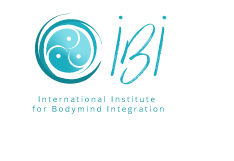«Why fit in when you were born to stand out»
–Dr Seuss
What is Attention Deficit Hyperactivity Disorder (ADHD)?
Attention Deficit Hyperactivity Disorder (ADHD), also called attention deficit hyperkinetic disorder or attention deficit hyperactivity disorder, is a neurobiological disorder that involves parts of the brain that control alertness, attention, and behavioral regulation.
ADHD is described in the DSM-IV-TR diagnostic manual as consisting of three different types:
- ADHD-I, the predominantly inattentive type (ADHD Predominantly Inattentive Type). This is the type where there is mainly severe and persistent attention weakness (difficulty keeping the attention in the here and now, dreamy type). This is also known as the ADD type. However, this designation has not been formally used since the publication of DSM-IV.
- ADHD-H, the predominantly hyperactive and impulsive type. This mainly involves severe and persistent impulsivity and hyperactivity;
- ADHD-C, the combined type. Both the inattentive and the hyperactive type problems are present. This type of ADHD is most common.
ADHD is typically diagnosed in children and adolescents, and may look different depending on whether the child looks primarily thoughtless, or hyperactive / impulsive. The combined type is both inattentive and hyperactive / impulsive.
Subtypes of ADHD
The characteristics for the inconsiderate and hyperactive / impulsive subtypes are shown below:
Inattentive
- Inattentive mistakes
- Doesn’t seem to be listening
- Cannot finish tasks
- Badly organized
- Easily loses business
- Quickly distracted
- Always seems to be in a daydream
- Forgetful
Hyperactive / Impulsive
- “Choppy”
- Inability to sit
- Always “on the road”
- Talk excessively
- Blurt out answers before the question is fully answered
- Impatient
- Constantly interrupting
Because something is similar to ADHD, it is just not yet ADHD. There are many other problems, such as depression, anxiety, or learning disabilities, that can mimic ADHD, or coexist with ADHD. Therefore, a diagnosis of ADHD requires a thorough evaluation of a person’s social, emotional, and academic functioning.
It is important to note that ADHD is not just a childhood disorder, but a lifelong condition. Symptoms of hyperactivity usually lessen in early adulthood, but difficulties with impulsivity and inattention tend to persist. It cannot be “cured”, but effective treatment that teaches the child/adult how to develop the skills it lacks and thereby better manage life with ADHD is possible.
Approaches for the treatment of ADHD
The Institute for Bodymind Integration offers a range of approaches for the treatment of ADHD.
- Individual therapy focuses on the development of specific skills, while also addressing the battle with mood and low self-esteem that often accompany the diagnosis of ADHD.
- Family therapy teaches parents how to incorporate the structure and support at home that will help the child progress.
- Group therapy provides safe and appropriate social training, where the child (or adult) can get feedback from others on how to regulate their behavior.
Did you like this article? Share it in:





